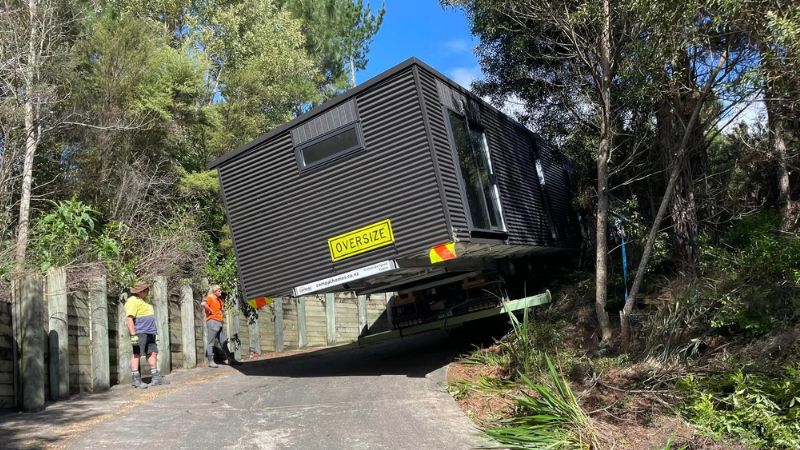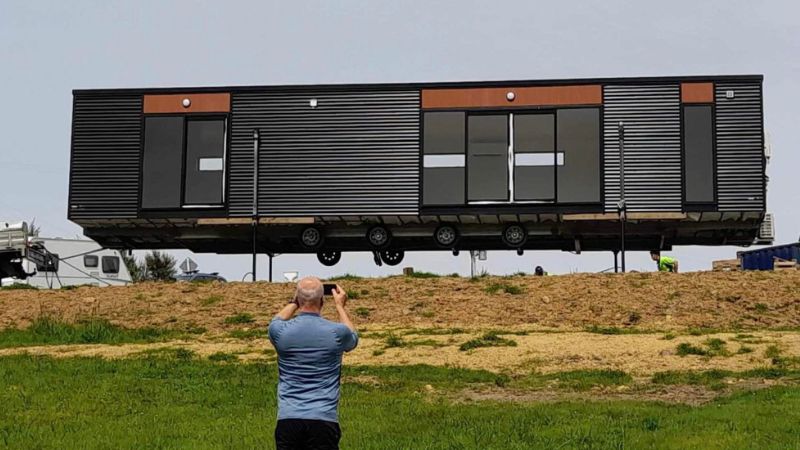Thinking of leasing land for your tiny house? Fabulous! But let's get real, there are a million things to consider before you park your Tiny Home.
Whether you intend to live under the council's radar or fully comply with regulations, it’s crucial to take practical steps to protect yourself. And one of the most important steps? A solid legal agreement.
Neighbourhood Vibes
-
Tiny House Neighbours: Look around. Do you see other tiny houses? If yes, that’s a green light. If not, be careful.
-
Nosy Neighbours: Can the neighbours or public see your tiny house? Friendly neighbours now might turn into complainers later. Be prepared for potential council visits.
-
Safety First: Check the area’s crime rates and natural hazards like landslides.
-
Avoid Restrictions: Steer clear of gated communities or neighbourhoods with restrictive covenants. They’re usually a hard no for tiny houses.
-
Previous Tiny House: Has a tiny house been on the site before? Ask if they faced any issues.
Access All Areas
-
Road Ready: Ensure there is clear access for your tiny house to get to the site. Overhanging trees and branches need to be cleared. Get a written agreement on who handles this.
-
Driveway Drama: Check the steepness of the driveway. You don’t want your house getting stuck or damaged.
-
Driveway Condition: Watch out for potholes, and clarify who is responsible for driveway access.
-
Flat Land, Happy Life: Flat land is your friend. Uneven terrain means more costs for levelling and building extras like decks and stairs.
-
Boundary Rules: Know the site boundary rules. Check the council’s district plan to see how close to the boundary buildings and structures can be.
-
Car Access: Ensure there’s easy access for cars close to the tiny house.
-
Shared Spaces: Clearly define responsibilities for maintenance, utilities, and any shared spaces.
Site Hazards
-
Flood Zones: If the site is in a flood zone, just walk away. Trust me.
-
Tree Trouble: Watch out for large trees near the site. Falling trees, especially shallow-rooted ones, are a big hazard for tiny houses.
-
Tree Cutting: Don’t assume you can cut those trees. Get consent from the owner or neighbours.
-
Soil Situation: Ensure the soil can support your tiny house, especially in wet conditions. Moving a tiny house in winter on soft soil is a nightmare.
-
Water Table Woes: Avoid high water table areas. You don’t want your house sitting in a puddle.
-
Privacy Please: Make sure the site offers privacy from the landowner’s home.
Service Connections
-
Water Supply: Ensure reliable access to water, whether it’s municipal, borehole, or rainwater collection. Clarify maintenance responsibilities.
-
Wastewater Management: Discuss greywater and blackwater management with the landowner. Get clear on expectations and responsibilities.
-
Power Play: Know how your house will be connected to power. If using an extension cord, consult an electrician to avoid disasters like voltage drop or overheating cords. If power is going to be supplied (especially if it’s on a shared meter), clarify how your partition will be calculated.
-
Solar Success: Ensure good sunlight exposure for solar panels (especially over winter months).
-
Wind Zone: Check the prevailing winds for the site and whether there is any natural protection from them.
-
Internet & Phone: Check coverage for both services when visiting the site.
Animal Antics
-
Pet Quotas: Verify if the address has reached its maximum number of registered dogs.
-
Roaming Pets: Ensure the landowner's pets won’t cause trouble with yours.
-
Livestock Location: Ensure you can fence off areas to keep livestock away. Flies from livestock in the summer are no fun.
Landowner Logistics
-
Tiny House Count: Know how many tiny homes the landowner plans to have. Too many can draw unwanted attention from the council.
-
Maintenance Roles: Clearly define maintenance responsibilities and any changes you can make to the land.
-
Landowner’s Tenure: Find out how long the landowner plans to stay. This can affect how much you’re willing to invest in setting up your site.
-
Notice for Sale: What happens if the owner wants to sell the property? Get clear on the notice period.
-
Previous Issues: Ask about any past problems with the site or neighbours.
-
Neighbour Relations: Check if the landowner has had any history of disputes or complaints with neighbours.
Legal Protections
-
Written Agreement: Get everything agreed in writing. You’re not covered under the Tenancy Act, so this is crucial. Remember the recent case where a couple was left homeless due to a land lease dispute? Read more about it here. Don’t let that be you!
-
Zoning & Lease Terms: Ensure the land is zoned for residential use and understand the lease length and renewal conditions.
-
Rent Details: Clarify the rent amount, payment schedule, and how often there could be potential increases.
-
Boundary Definitions: Clearly define the boundaries of your leased land.
-
Legal Review: Consult a lawyer to review the lease terms and ensure your interests are protected. You can even buy our detailed land lease agreement written by our professional lawyer, designed specifically for tiny houses.
Miscellaneous Must-Knows
By following these tips, you’ll be well on your way to enjoying your tiny house lifestyle without unnecessary stress. Happy tiny living!



